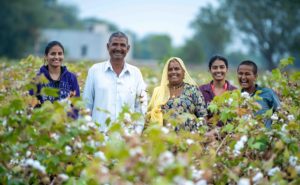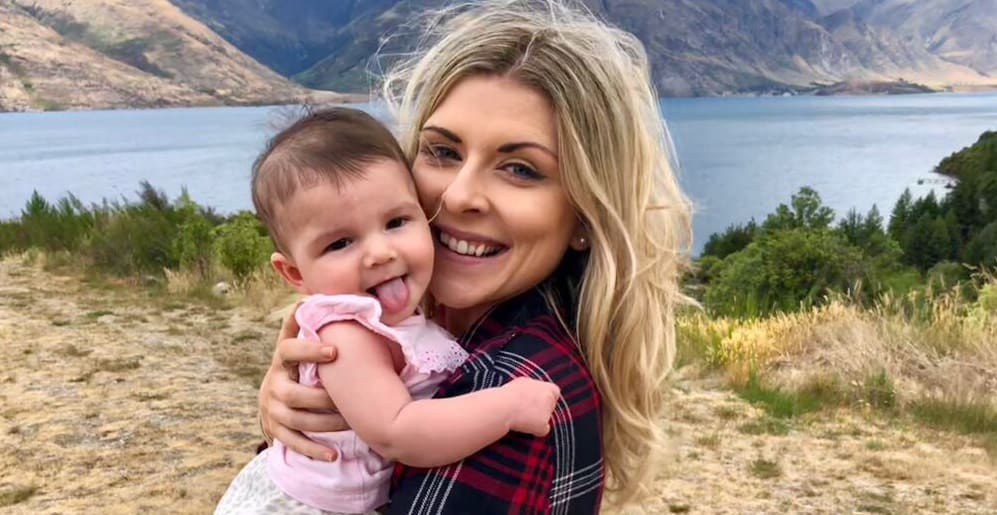Can major fashion houses be part of the transformative shifts we need? Are there any which are currently in the game and genuinely trying to do more? What does it look like from the inside? Green Is The New Black spoke to Marie-Claire Daveu, Chief Sustainability and Institutional Affairs Officer at Kering, to find out.
But before we delve into the questions, we’d like to share a little bit about why Kering, and why now.
Last week, Green Is The New Black just wrapped our first-ever Paris edition of the Conscious Festival. With over 4,700 participants who came across the three days of our event, it was a spectacular success. But it wouldn’t have been possible without our founding partner Kering. Here’s the thing about big events that you might not have realised. More often than not, you need a hefy bit of resources to make it happen. This time, with Kering on board, among other collaborators, we could power a Festival that even crossed borders. (We even had pop-ups in London and Singapore!)
Paula Miquelis, co-founder of Green Is The New Black shared: “if we want change to happen fast, it’s important that we collaborate.” On how Kering played a key role in the Conscious Festival, Miquelis added: “Marie-Claire Daveu and her team trusted the Conscious Festival. For a big group to trust a smaller social enterprise, you really need agility. And you need to share the same mission to do good by doing well.”
Why Kering, you ask? Miquelis emphasised that “regeneration is the word you hear everywhere nowadays. It inspires us at Green Is The New Black, and, thankfully, it has resonated with Kering too. We love that it’s shaped their strategy, and you can see that through the way they focus on regenerative agriculture. Fashion and agriculture are deeply connected—after all, raw materials come from somewhere, right? So we better do it well.”
Why Kering?
Indeed, regeneration features extensively across Kering’s strategy, starting with its Regenerative Fund for Nature. Kering began this fund precisely because the future of fashion and agriculture are explicitly linked, yet the latter is currently a major driver of biodiversity loss and climate change. Kering believes that instead of being the destructive force it currently is, we can transform the agriculture industry into a powerful nature-based solution. Hence, together with Conservation International, Kering launched the Fund, with the aim of transforming one million hectares of crop and rangelands into regenerative agricultural spaces over the next five years.

Through the Fund, Kering is delivering the support to drive the transition towards regenerative fashion, through grants to farming groups, project leaders, NGOs and other stakeholders around the world. Currently in its first year, the Fund is supporting seven projects across seven different countries. This Fund, of course, is part of its wider strategy to improve its (and the fashion industry’s) sourcing. By 2025, it aims to roll out sustainable sourcing and manufacturing that fully align with Kering standards, and internally, it aims to achieve full traceability in its key raw materials by 2025.
Is it possible for major fashion houses to enact change in its supply chain? Kering is working on it—and recently even made the decision to stop using animal fur across the Group’s Houses. To learn more about what goes on behind the scenes, Green Is The New Black caught up with Marie-Claire Daveu herself…
On how she joined, and what she does…
The environment has always been one of my passions since a young age. I was born in Brittany, Rennes, which isn’t far from the sea, so I think that’s where it started. I decided to study biology, and initially I was working in the public sector, but pivoted to the private sector to learn the operations behind it and involve myself on a more international scale. So I joined the Kering Group in September 2012, where I met our CEO François-Henri Pinault.
Then, I realised that it’s so important for a CEO to be personally invested in the topic (in this case of environmental and social ethics) because if your top management—and specifically the number one—isn’t, then you really can’t do much. So my role at Kering is to concretise and bring to life our CEO’s sustainability vision. What happens is, I develop the strategy with him, and then I make sure it becomes a functioning reality with the corporate team, the brands and all of our partners.
For me, personally, it’s important to see through exchanges between the public and private sector. I think there’s a need to learn from both sides, and when we’re thinking through major challenges like the climate crisis, biodiversity and natural resource loss, we need both to be working hand-in-hand. And not to forget, of course, the non-profit sector, which I worked within for a long time when I was younger. So it’s a three-way collaboration.
On her reaction to the IPCC report…
What personally struck me was the way in which what was predicted really became a reality. Most especially, the intensity of the phenomenon as we observed in Europe. And, of course, the disasters across America and Asia too. All of these were accurate to the data the scientists gave us. How do we go about acting in response to all this? I personally don’t like the notion of fear, which is paralysing, because we’re actually in a position of responsibility. It’s our duty to be aware of the challenges, and act on them. Which is not to say we should never be fearful, but rather that we should be looking on how to act instead.
I think we should look forward with pragmatism and optimism. I’ve been struck by how much has changed in terms of how people think, and how people have engaged. Only a few years ago, you had a lot of people who doubted the reality of climate change. This, of course, isn’t true anymore. Now, you see so many companies, governments, and people who really want to change things. The challenge now is about how fast we act. The time period we have to take action is short—so we need to speed up. So as I said, we have to balance the optimism in this situation with the reality of what we’re facing.
On what she’s most proud of within the Kering Group…
What we succeeded in doing is creating an internal culture of really caring about the issue. Within the Group, our employees, designers, brands, even to the corporate team, finance, and HR, you can see and feel that it’s not just words. Everyone has their own objectives, and follow-up indicators!
I’m particularly proud of the EP&L, a pioneering tool that allows us to measure not just environmental footprint, but also along our entire supply chain. If you can’t measure it, and if you don’t have the right metrics, you can’t implement the actions that you need to take. We’ve put in place what we call our Kering Standards, which covers the environmental, biodiversity, animal welfare aspects. We apply these standards to all of our raw materials and the processes of making it, so we think about these things when we draw up our buying contracts, etc.
Another thing I’m proud of is our innovation. We can’t answer major challenges without innovation. So for the Kering Group, we’re thinking about things like how to produce leather in labs, how to use microorganisms to create colours…

On the Kering Group being an influential force for good and future plans…
I sincerely think that the Kering Group was a pioneer in the animal welfare space. We brought this topic into mainstream conversations! And we can see today that our clients in Europe, America and Asia are more sensitive to this issue. Ultimately, our objective as a Group is to have the capacity to be an influential force. We want to not only change our supply chain, but also have a global influence. We want to be influencing our partners and clients, to show them that we are going all the way in terms of taking care of the planet and the people working for us.
Personally, I really want us to achieve the objectives we gave ourselves, by 2025. It’s critical to reduce greenhouse gas emissions, to protect biodiversity, to impact our supply chain. We’re doing everything we can to achieve it. And if we don’t? We’re committed to being extremely transparent—not only about our successes, but also about the difficulties we encounter, and our failures. That’s why we made the decision to communicate where we are every three years!
To be transparent, of course, it comes back to what I was sharing earlier about our sustainability metrics. Having these metrics helps us, which in turn helps others in the industry too. I hope that thinking and acting sustainably does become normalised for companies and governments. There is an emergency—we can’t question whether we should act or not. The truth is that we have to.
Interview has been edited for length and clarity.

